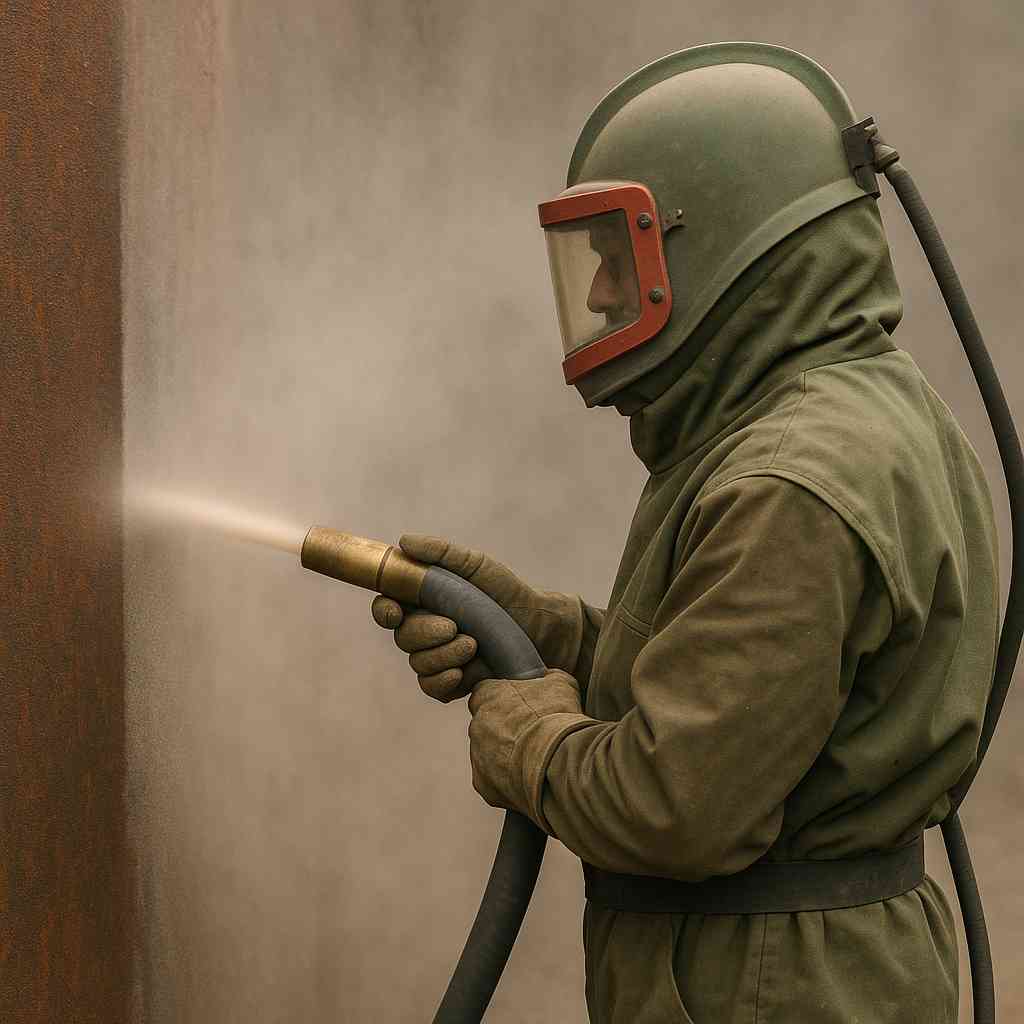What Are Industrial Abrasives?
An industrial abrasive is a blasting medium used to remove rust, scale, old coatings, or surface contaminants from steel and other materials. Abrasives play a critical role in surface preparation for industrial painting and coating, where the grit size and type directly affect surface roughness and cleaning efficiency.
What Is Sandblasting?
Sandblasting, more accurately known as abrasive blasting, is the process of using pressurized equipment and abrasive media to clean or prepare a surface before coating. Despite the term “sandblasting,” sand is no longer widely used due to health risks associated with silica dust, which can cause silicosis.
In many regions, silica-free abrasives such as steel grit, copper slag, and garnet have replaced traditional sand.
Why Sand Is Not Used as an Abrasive
Sharp sand and other free-silica abrasives are restricted in many parts of the world. Inhaling silica dust during blasting can cause severe respiratory diseases.
Exceptions exist in controlled environments, such as wet blasting with water-jetting equipment, where operators are fully protected and local authorities approve the method.
List of Modern Industrial Abrasives
Here are some widely used modern blast media types in surface preparation:
- Chilled Iron Grit or Shot – High-density abrasive with excellent cutting efficiency, best for reclaimable blasting operations.
- Crushed Slag – Affordable option made from copper, coal, or aluminum slags; suitable for single-use blasting.
- Ceramic Grit – Expensive but ideal for thin metals and non-ferrous surfaces, offering precise cutting at lower pressures.
- Mineral Grit (Natural Abrasives) – Naturally occurring abrasive minerals used for cost-effective blasting.
Abrasives: Types, Selection, and Best Practices for Surface Preparation
Key Types of Industrial Abrasives
Industrial abrasives are categorized into several groups:
1. Metallic Abrasives
- Steel Grit – Angular particles for aggressive cleaning and profiling.
- Steel Shot – Rounded particles used in shot blasting machines.
- Cast Iron – Extremely hard, effective for heavy-duty cleaning but brittle.
- Malleable Iron – Stronger and more durable, suitable for repeated use.
2. Hard Non-Metallic Abrasives
- Garnet – Sharp and durable, ideal for precision blasting.
- Aluminum Oxide – Fast-cutting, long-lasting, and consistent.
- Silicon Carbide – Extremely hard and sharp, used for specialized applications.
3. Slag Abrasives
- Byproducts of industrial processes, such as copper slag and nickel slag, often used as cost-effective disposable abrasives.
4. Agricultural Abrasives
- Crushed walnut shells and corncobs, used where a softer, non-metallic medium is required (e.g., aerospace applications).
5. Specialty Abrasives
- Dry Ice – Leaves no residue and produces minimal dust.
- Plastic Media – Gentle blasting for sensitive substrates, such as aircraft coatings.
- Sponge Media – Reduces dust and waste by encapsulating contaminants.
Industrial Abrasive Testing and Quality Control
To ensure coating performance, abrasives must meet cleanliness and size requirements:
- Cleanliness Test (Vial Test) – Detects oil, dust, and contaminants.
- Sieve Analysis – Determines particle size distribution according to ASTM standards.
- Hardness Testing – Assessed using Rockwell or Mohs scales.
Recycling and Reuse of Abrasives
Recycling abrasives lowers costs and reduces waste. Common recycling methods include:
- Mechanical Screening – Separates usable particles from fines and dust.
- Air-Wash Systems – Uses airflow to clean and recover abrasives.
- Water Washing – Effective but limited to non-corrosive materials.
- Vacuum Recovery – Extracts and separates abrasives for reuse.
Final Thoughts
Industrial abrasives are essential for surface preparation in painting and coating industries. Choosing the right abrasive depends on the surface type, coating system, and whether the abrasive can be recycled. Modern alternatives like ceramic, garnet, and sponge abrasives not only improve efficiency but also address health and environmental concerns.

